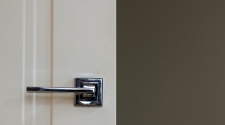Have you ever heard the term contracts-for-difference and wondered what it meant? Maybe you have noticed the term CFD appear in trading and investing articles and were puzzled. If so, it’s a good idea to review the main facts about what these interesting, exciting instruments are. At first, the idea might seem a bit confusing, but after you examine the key points about CFDs, you’ll see why so many people find them to be one of the easiest ways to take part in the markets. The beauty of these unique contracts is that you can employ them whether you’re interested in stocks, bonds, forex, or dozens of other kinds of securities.
They are Not Assets
Contracts for difference are not securities; they are contracts. In fact, you don’t own any underlying asset like a stock, commodity, or anything else. You’re essentially entering into a written contract with your broker. You choose which direction you believe the price will go. If you purchase a long CFD and the price of the underlying security rises, you can sell it back to your broker and pocket the profit, less whatever spread you had to pay to get into the transaction. Note that these instruments do not have commissions, but brokers and dealers make their profit on the spread. That’s the amount above the market price, a premium actually, that you pay to purchase the contract-for-difference.
There are Important Advantages
People who use these types of contractual instruments don’t ever have to own or take delivery of assets. Because there are no assets involved, and simply a legal agreement, you don’t own anything, don’t have to store anything, and won’t get stuck with stocks, bonds, or commodities that might become hard to sell in a downward market. Your broker will always act as a buyer or seller when you decide to end the transaction. Margins are lower, and you can typically open an account with a small amount of money. Lower margins mean that you can enjoy a greater amount of leverage when trading this way. Plus, you can go short at any time on any security, which allows you to profit if the price moves downwards.
Downsides
It takes a while to get used to using these instruments, and you’ll need to make sure your own broker allows you to trade them via CFD trading platform. You also need to choose a reliable, experienced broker regulated in jurisdictions with stringent requirements for providers, such as easyMarkets.
Buying and Selling
To get started with trading CFDs, all you need to do to place an order is choose whether to go long or go short. Going long means you predict the price of the underlying security will rise. Going short is the opposite. When you choose a particular CFD, you’ll simply click on it to select it as an order, decide how much to purchase, and place the order. You’re actually making a contract with your broker, who settles the net difference in your account after you decide to sell the contract.
















